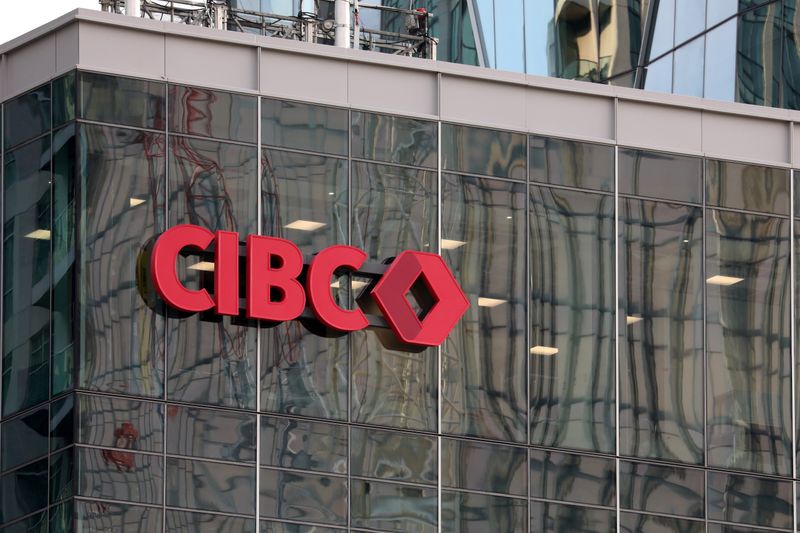By Nichola Saminather
TORONTO (Reuters) -Toronto-Dominion Bank sounded a cautious note about next year’s outlook due to inflation and the end of stimulus measures after better-than-expected earnings, while Canadian Imperial Bank of Commerce missed estimates due to higher expenses and loan-loss provisions.
Both banks also joined rivals in announcing share buybacks and raising dividends, after the financial regulator lifted restrictions on capital distributions last month.
TD, Canada’s second-biggest bank, surprised with a 5-basis-point margin expansion in its U.S. retail business in the fourth quarter ended Oct. 31, compared with the prior quarter. It also released C$123 million ($96 million) of reserves previously set aside to cover loan losses.
But its chief executive warned that meeting the bank’s medium-term target of 7%-to-10% adjusted earnings-per-share growth would be challenging in 2022.
“While we have good momentum entering the year, the road ahead is likely to be bumpy,” CEO Bharat Masrani said on an analyst call.
Executives pointed to a “complex” macroeconomic environment, characterized by high inflation as well as uncertainties over the economic trajectory and consumers’ financial health as pandemic-related stimulus payments are withdrawn.
Loan-loss provision releases and trading activity, which helped earnings this year and are set to return to more normal levels, and revenue pressure from the U.S. Paycheck Protection Program’s loan forgiveness will also be challenges, Masrani said.
While TD is keeping loan-loss allowances high to reflect those, it will look “very seriously” at any acquisition opportunities in Canadian financial services to use its excess capital, as “there are not many opportunities that present themselves,” Masrani said.
CIBC, the country’s fifth-largest bank, reported 10% revenue growth, but that was clouded by a 13% increase in expenses. It also took C$78 million of provisions, higher than expected, as a 36% jump in money set aside in its Canadian banking unit offset releases in other divisions.
The bank said it expects expense growth in fiscal 2022 to rise to the mid-single digits, but aims to deliver positive medium-term operating leverage, with revenue growth outpacing expense expansion.
“While we may have periods of negative operating leverage earlier in the year, we will target positive operating leverage across our business through the course of next year,” Chief Financial Officer Hratch Panossian said on an analyst call.
DIVIDEND HIKES
TD shares closed up almost 5% at a record high of C$96.50 in Toronto, while CIBC fell 2.8% to C$137.28, a six-month low. The broader stock benchmark rose 1.45%.
TD said it would increase its dividend by 12.7%, and buy back up to 2.7% of outstanding shares.
CIBC will raise its dividend by 10.2% to C$1.61 per share and buy back up to 2.2% of stock, it said.
Canadian banks have faced pressures from low margins and higher variable compensation costs this quarter, as some of the earlier boost from their capital markets businesses and reserve releases receded.
But the hoped-for recovery in Canadian non-mortgage lending appears to be materializing, albeit at different rates.
Canadian credit card lending at both banks rose 3.1% from the prior quarter. TD’s business lending grew 2.6% from the previous quarter, the same pace as mortgage growth. CIBC’s corporate lending increased 0.85%, compared with a 3.4% increase in home loans.
TD reported that adjusted fourth-quarter net income rose to C$2.09 a share, beating the average analyst estimate of C$1.96.
CIBC’s adjusted earnings for the quarter were C$3.37 per share, versus the expected C$3.53.
($1 = 1.2817 Canadian dollars)

